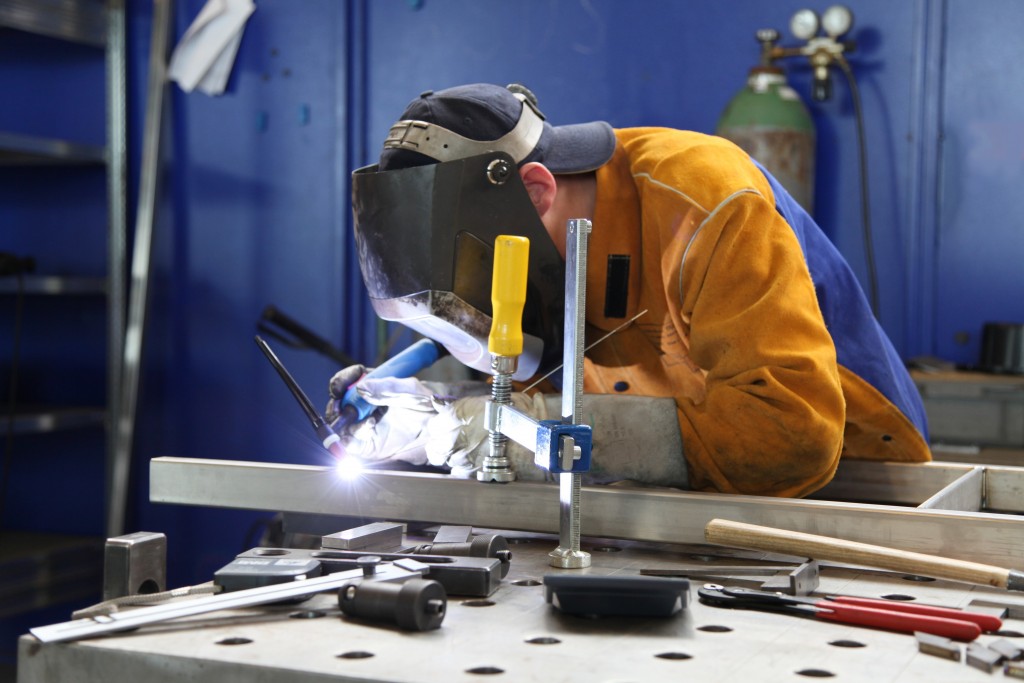Metal fabrication involves creating parts or machinery through different methods including welding, grinding, milling, and honing. It is a process that is used in many industries, from construction, shipbuilding, and aerospace to mining, automotive, and the food and beverage sectors. Before beginning a metal fabrication project, it is essential to understand which raw materials are appropriate to use.
This includes choosing the type of metal that best suits the metal fabrication project. Many metal types can be used in metal fabrication; however, stainless steel is the more popular choice because not only does it look good, but more importantly, stainless steel is stronger and durable than most of the other metal types.
Types of Stainless Steel
Austenitic
Austenitic grade stainless steel is one of the most common types of stainless steel. The structure of austenitic stainless steel is composed of nitrogen, nickel and manganese. Austenitic stainless steel has excellent corrosion resistance, weldability, and ductility. Austenitic grades are typically used in food processing equipment, chemical plant machinery and equipment, and architectural applications.
Ferritic
This type of stainless steel is chromium-based with low carbon content. Ferritic stainless steel is suitable for metal fabrication projects that don’t require welding. It is also commonly used in marine applications because it can resist sea water corrosion.
Martensitic
Just like ferritic stainless steel, martensitic stainless steel is chromium-based, but it has high quantities of carbon. Martensitic stainless steel is applicable in situations where a moderate level of corrosion resistance and high strength are needed. This type of stainless steel is widely used in hospital, dental and surgical equipment
Properties of Stainless Steel

Tensile Strength
Tensile strength is the ability of any material to withstand stress before breaking or deformation. While stainless steel is easy to weld, cut, or stamp using the right equipment, it also possesses high tensile strength, allowing it to maintain its form even when subjected to high stress.
Corrosion Resistant
Stainless steel contains at least 10.5% chromium, which provides the structure with a thin but protective oxide layer. The chromium content of stainless steel protects it from corrosion.
Acid Resistant
Stainless steel can stand against most acids (except hydrochloric acid), but it depends on the type and concentration of acid, type of steel, and temperature of the environment. For example, type 304 stainless steel is highly resistant to high concentrations of sulfuric acid at room temperature.
Cryogenic Resistant
The cryogenic property of any material is measured by its ability to remain ductile of tough at sub-zero temperatures. When it comes to stainless steel, austenitic stainless steel possesses higher tensile strength compared to other stainless steel types, enabling it to maintain toughness at cryogenic temperatures.
Heat Resistant
Austenitic stainless steel remains strong even when subjected to elevated temperature. Stainless steel high in chromium, silicone, and nitrogen, as well as ferritic grade stainless steel also show excellent resistance to high temperatures.
Sustainability
Stainless steel is recyclable, without losing its strength and quality, making it a top choice for companies that want to create less impact on the environment.
As shown above, stainless steel possesses many beneficial properties that make it an ideal material for many commercial, industrial, or household applications.
